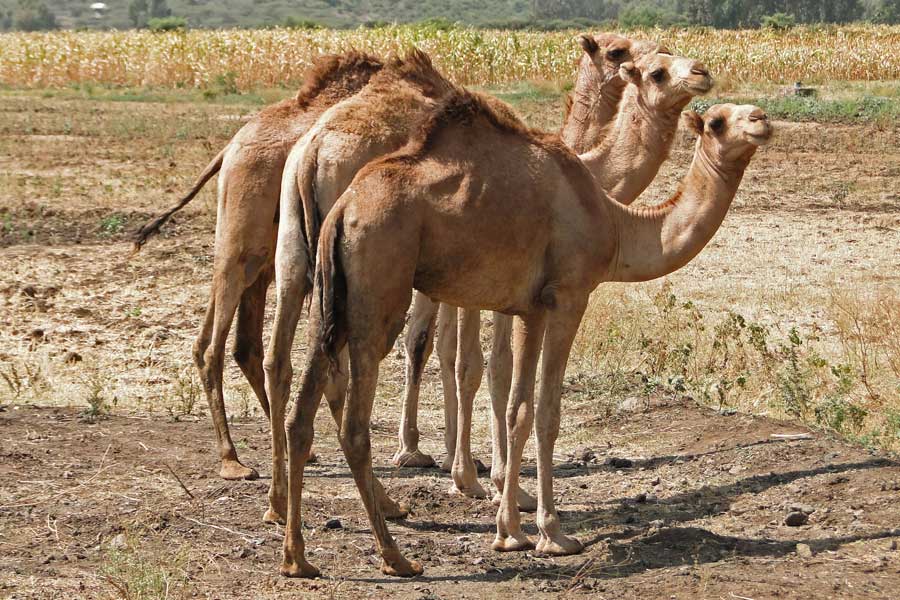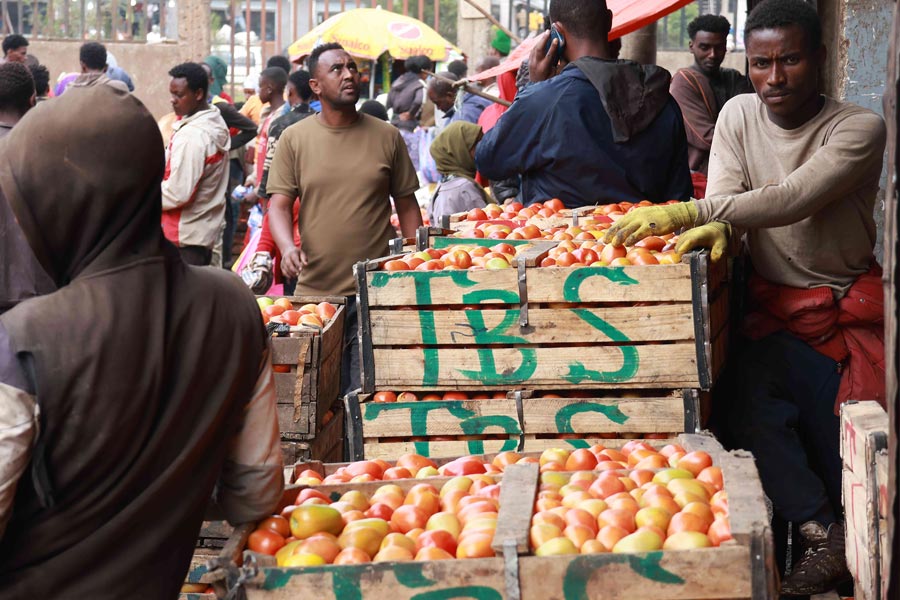
Jun 10 , 2023
By David Phiri
The Eastern Africa region boasts a surfeit of livestock riches, harbouring over half of Africa's livestock. Indeed, Ethiopia, Kenya, South Sudan, Tanzania, and Uganda alone cradle around 132 million cattle — approximately nine percent of the world's total 1.5 billion. Throw in 180 million chickens, 225 million goats and sheep, and 14 million camels, and it begins to fathom the enormity of this livestock wealth.
Livestock is more than just animals for a considerable portion of rural households (between 60pc to 80pc). For these households, mostly operating extensive farming systems with a pastoral bent, livestock form a vital part of their sustenance matrix. Simultaneously, governments perceive these herds as crucial linchpins for food security and a substantial injection of foreign currency.
The reverberations of the livestock sector are felt on both macro and micro levels. Smallholder farmers rely on direct cash from selling livestock and products like milk, eggs, and meat. This income, in turn, enables them to meet fundamental household expenses, including school fees, healthcare, and food.
Livestock serves as a form of insurance, a buffer against crises. In bountiful times, families can accumulate livestock and then sell them when times get tough. The beasts also play central roles in rural farming systems, offering draught power and providing manure — a sustainable and effective way to bolster soil fertility, quality, and water retention.
Nationally, livestock contributes between 30pc to 80pc of the agricultural GDP. Eastern Africa, conveniently located near the Arabian Gulf's bustling livestock markets, holds the mantle as Africa's largest exporter of live animals. This earns the region over a billion dollars annually from animal and animal product exports.
The contribution of livestock to food security and improved nutrition cannot be overstated. Animal-source foods remain the finest source of protein and micronutrients, vital for bolstering children's cognitive and physical development, school attendance, and performance. Pregnant and breastfeeding mothers consuming animal products are likelier to give birth to healthy-weight babies, and their children are less prone to malnutrition.
Several emergency projects in Eastern Africa have shown that providing livestock with animal feed during droughts safeguards households' livestock assets and helps maintain milk production levels. The resulting increased milk consumption by children and mothers decreases the risk of acute child malnutrition, stunting, wasting, and being underweight.
In essence, animal-source foods can be instrumental in achieving global nutrition targets for 2025 endorsed by the World Health Assembly and the Sustainable Development Goals (SDGs), particularly in preventing stunting in children under five, low birth weight, and anaemia in women of reproductive age.
Given its crucial role in food security, the livestock sector must adapt to the escalating food insecurity and malnutrition challenges plaguing the region. This transformation, however, is impeded by numerous issues that the sector must first surmount.
Among these are disease outbreaks, a dearth of quality and quantity of feed, water scarcity, and restricted access to veterinary and extension services. Climate change, natural disasters, conflicts, limited market access, and rampant illegal trade aggravate the situation.
Addressing these issues can catalyse a paradigm shift in income generation, employment, and, most importantly, nutrition across the region. Several measures could enhance the sector's performance, including devising strategies to help poor livestock farmers access productive assets and rural services. Strengthening livestock organisations and promoting small-scale producers and their cooperatives are also crucial.
Enhancing productivity should concentrate on small producers with more accessible, gender-responsive extension services. Planning for disease prevention, including adopting the "One Health" approach, should be institutionalised. Increased investment in infrastructure and improved access to financial resources, technology, and innovation are critical. It is also imperative to make livestock markets more transparent and efficient.
Countries must lay the groundwork today to guide the livestock sector towards sustainable development and help alleviate the sub-regions rampant food insecurity and malnutrition.
The Food & Agricultural Organisation (FAO), a UN agency, partners with member nations to bolster the role of livestock systems in achieving food security and nutrition. It strives to facilitate sustainable livestock systems, operating at the intersection of better production, better nutrition, a better environment, and a better life.
Somalia, for example, has made strides in transforming attitudes and practices related to fodder production to enhance animal nutrition. Mechanisation and increased use of crop residues for livestock feed have boosted income from fodder production, thereby improving household and community resilience. This, in turn, has led to a better market system promoting a steady supply of quality fodder.
Better feeding practices lead to higher dairy cow and goat productivity, translating into improved nutrition for women and children, as seen in Kenya, and increased household incomes. Innovations in feeding, genetics, animal health, husbandry practices, and information technology can significantly increase livestock, crop, and pasture productivity. This not only enhances energy provision and supplies of essential nutrients like protein, fatty acids, and micronutrients but also contributes significantly to improved nutrition.
The sustainable transformation of livestock systems should ensure the efficient use of natural resources to address hazards to biodiversity, thereby promoting a better environment. This transformation must consider the well-being of humans and animals and ensure that livestock systems are fully integrated into rural development policies. The aim is not just to maintain a diverse range of livestock systems but also to capitalise on livestock's multifaceted contributions towards improving life quality.
The potential of the livestock sector in Eastern Africa is vast and untapped. With the right measures and adequate investment, it can transform the region, offering a resilient path towards sustainable development, improved nutrition, and better living standards for the communities that depend on it.
PUBLISHED ON
Jun 10,2023 [ VOL
24 , NO
1206]


Viewpoints | May 04,2019

Viewpoints | Feb 12,2022

Featured | Jan 07,2024

Fortune News | Nov 30,2019

Fortune News | Jun 26,2021

Radar | Sep 24,2022

Fortune News | Jun 20,2025

Fortune News | Jul 29,2023

Viewpoints | Dec 17,2022

Agenda | Feb 17,2024

My Opinion | 131658 Views | Aug 14,2021

My Opinion | 128022 Views | Aug 21,2021

My Opinion | 125985 Views | Sep 10,2021

My Opinion | 123609 Views | Aug 07,2021

Dec 22 , 2024 . By TIZITA SHEWAFERAW
Charged with transforming colossal state-owned enterprises into modern and competitiv...

Aug 18 , 2024 . By AKSAH ITALO
Although predictable Yonas Zerihun's job in the ride-hailing service is not immune to...

Jul 28 , 2024 . By TIZITA SHEWAFERAW
Unhabitual, perhaps too many, Samuel Gebreyohannes, 38, used to occasionally enjoy a couple of beers at breakfast. However, he recently swit...

Jul 13 , 2024 . By AKSAH ITALO
Investors who rely on tractors, trucks, and field vehicles for commuting, transporting commodities, and f...

Jun 28 , 2025
Meseret Damtie, the assertive auditor general, has never been shy about naming names...

Jun 21 , 2025
A well-worn adage says, “Budget is not destiny, but it is direction.” Examining t...

Jun 14 , 2025
Yet again, the Horn of Africa is bracing for trouble. A region already frayed by wars...

Jun 7 , 2025
Few promises shine brighter in Addis Abeba than the pledge of a roof for every family...

Jun 29 , 2025
Addis Abeba's first rains have coincided with a sweeping rise in private school tuition, prompting the city's education...

Jun 29 , 2025 . By BEZAWIT HULUAGER
Central Bank Governor Mamo Mihretu claimed a bold reconfiguration of monetary policy...

Jun 29 , 2025 . By BEZAWIT HULUAGER
The federal government is betting on a sweeping overhaul of the driver licensing regi...

Jun 29 , 2025 . By NAHOM AYELE
Gadaa Bank has listed 1.2 million shares on the Ethiopian Securities Exchange (ESX),...